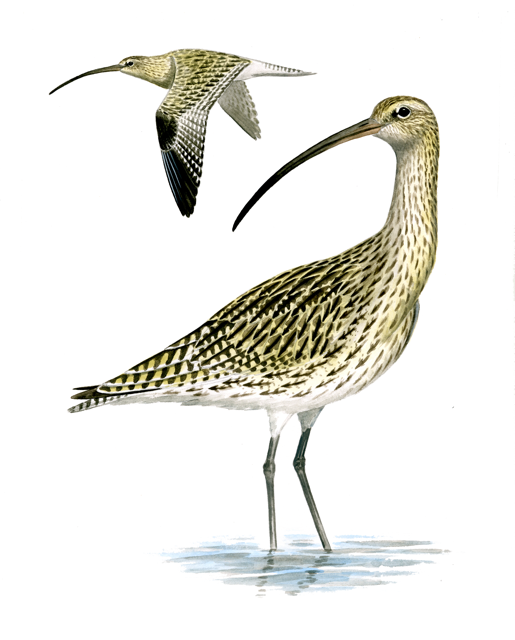On the exhibition
'The wilderness of Vjosa-Narta' is an artistic intervention, implemented by PPNEA with the support of the Heinrich Böll Foundation, Tirana office. It started in the middle of December 2022 at Destil Creative Hub, with the aim of bringing in the center of the capital the endangered bird species that shelter in the Narta lagoon, the estuary of Vjosa river, the last free-flowing river in Europe.
Although the Vjosa river is to be declared a national park in the upcoming months, the airport construction planned by the government within its lagoon represents a real threat to the rich biodiversity in the area.
The Narta lagoon is a focal area for the Adriatic flyway. Due to their geographical position and unique environmental conditions, the wetlands offer shelter for wild animals, especially birds, and represent high biological values at the national and international levels.
The recorded interviews focused on broadcasting the many natural values of Vjosa-Narta. Zydjon Vorpsi, a member of PPNEA, discussed in the interview the threat imposed by the Vlora airport, which will jeopardize the entire ecosystem if the construction works continue and the airport is going to be functional. Xhemal Xherri, also a PPNEA member, discussed the rich biodiversity of the area, focusing on migratory bird species, as well as on the nesting ones. Dr. Nebi Bardhoshi, a renowned ethnographer in Albania, discussed about the relationship between the communities and the landscape, giving the exhibition some new perspectives on the local context.
The first exhibition occurred in Destil Creative Hub, at Heinrich Böll Foundation, Tirana office. However, during this year, the project is planned to move to different cities throughout Albania offering pop-up shows in educational institutions, natural parks, etc., aiming to raise awareness of the valuable biodiversity and natural heritage of the country.



© Xhemal Xherri / PPNEA
© Xhemal Xherri / PPNEA
© Xhemal Xherri / PPNEA

Northern lapwing (Vanellus vanellus)
Body length 8-31 cm.
Wingspan length 70-76 cm.
The Northern lapwing is the size of a pigeon. It has a glossy black green back. It has a white belly and a crest on its head. In flight the white underarm and body contrast with the black flight feathers.
Suitable habitats for the Northern lapwing are swamps, pastures, cultivated lands, often close to temporarily flooded environments. It feeds on insects, spiders and earthworms.
Its existence is threatened by intensive agriculture, including pasture cultivation, and disturbance during the breeding season.


Black-winged stilt (Himantopus himantopus)
Body length 33-3 cm.
Wingspan length 70 cm.
The Black-winged stilt has red and long legs. The wings are black on both the upper and lower parts, while the throat, chest, belly, tail, rump and part of the back are white. The male has white spots on the head and nape, while the female has the crown and nape almost entirely white.
Suitable habitat for them is mainly shallow salt lakes and salt marshes, but it can also be found in freshwater wetlands. It feeds on insects and other aquatic insects.
The existence of the black-winged stilt is threatened by the drying and deterioration of marshes, the filling of saltpans, construction, the destruction of nests and eggs by wild animals.


Eurasian curlew (Numenius arquata)
Body length 48-57 cm.
Wingspan length 89-106 cm.
The Eurasian curlew is easily distinguished by its very long, downward-turning beak. It flies with slow wing beats.
Its suitable habitat is wetlands and open grassy areas, mainly along the coasts. It feeds on invertebrates.
The existence of the great Eurasian curlew is threatened by the drying and deterioration of the marshes and construction along the banks.


Ruddy turnstone (Arenaria interpres)
Body length 21-24 cm.
Wingspan length 43-49 cm.
The Ruddy turnstone in winter is gray to brown on the upper body and has a prominent dark stripe on the chest. In summer, adults have orange-brown upperparts with a white nape and white crown as well.
Suitable habitats for the Ruddy turnstone during the winter are the various coastal wetlands. It feeds on water snails. Turns stones with its beak to find its prey.
Their existence is threatened by the drying and degradation of marshes, water pollution and poaching.


Flamingo (Phoenicopterus roseus)
Body length 120-145 cm.
Wingspan length 140-17cm.
It is an unmistakable bird. The old ones are white with pink motifs, the young ones are gray to brown. They are often seen in large flocks. In flight, the long neck and legs are easily distinguished, as well as the red part on the wings.
The most suitable habitat for them is wide, shallow, salty water areas, in some cases it can also be seen on muddy shores and beaches. They can be seen mainly in the saltpans of Narta. They feed on small crustaceans.
Their existence is threatened by disturbance, poaching, entanglement in fishing nets and water pollution.


Common Shelduck (Tadorna tadorna)
Body length 55-65 cm.
Wingspan length 100-120 cm.
Common Shelduck is mostly white, with a dark green head. It has a chestnut stripe along the chest and black forearm. The underarms and outer wing coverts are white, while the flight feathers are black.
Its most suitable habitat is the coast and brackish water environments near sand dunes. It feeds on crustaceans, mollusks, water insects and their larvae, as well as the green parts of plants.
Its existence is threatened by the degradation of marshes, water pollution, disturbance during the breeding season and poaching.


Dalmatian pelican (Pelecanus crispus)
Body length 160-180 cm.
Wingspan length 270-320 cm.
It is one of the largest flying birds.
Adults are gray to white with "curly" head feathers, large beak with bright red "bag" that is highlighted during the breeding season. The eyes are pale grey and the legs too.
Their habitat is marshes, lakes, fish ponds, reservoirs and semi-saline lakes. They feed on fish.
Their existence is threatened by the drying and destruction of marshes, destruction of nests and damage to eggs by other animals, disturbance during the breeding season as well as electrocution on electric poles.


Little tern (Sternula albifrons)
Body length 21-25 cm.
Wingspan length 41-47 cm.
The little tern is the smallest of the sea terns. The upper part of its body is gray, the lower part is white and the tips of the wings are black. It has a black head and a white forehead while its beak is yellow with a black tip.
Most suitable habitats for the Little tern are salty lakes, brackish and fresh water, marshes and coasts. It feeds on small fish.
The existence of the Little tern is threatened by drying and degradation of wetlands, coastal construction, fluctuating water levels, destruction of eggs by other animals and disturbance during the breeding season.


Little ringed plover (Charadrius dubius)
Body length 15-18 cm.
Wingspan length 32-35 cm.
Little ringed plover is slightly smaller than the Common ringed plover. It has proportionally longer legs, a thinner and darker beak, and the cheeks are black in the shape of an arch turned downwards. In flight, the thin stripes of the wings are visible. During the summer, the yellow ring of the eye is created.
Its suitable habitat is shallow shores (of the sea, salt flats, etc.) with pebbles and sand, and areas that offer similar habitats. It feeds on insects and small crustaceans.
The existence of the Little ringed plover is threatened by coastal and river urbanization, illegal sand and gravel erosion and disturbance during the breeding season.

The exhibition was realized by Protection and Preservation of Natural Environment Albania (PPNEA) in partnership with the Heinrich Böll Foundation, Tirana Office
Illustrations, photography, and text on birds retrieved from the book 'Shpendët e Shqipërise' (Birds of Albania), published by PPNEA
Curation: Donika Çina
Design: Apparat Studio
Exhibition gallery
Address:
Heinrich Böll Stiftung, Tirana Office
New Destil Creative Hub, 3rd Floor
Zogu I Boulevard, 24/2
1016 Tirana
Mob.: +355 69 608 3302
E-Mail: info@al.boell.org
https://al.boell.org



